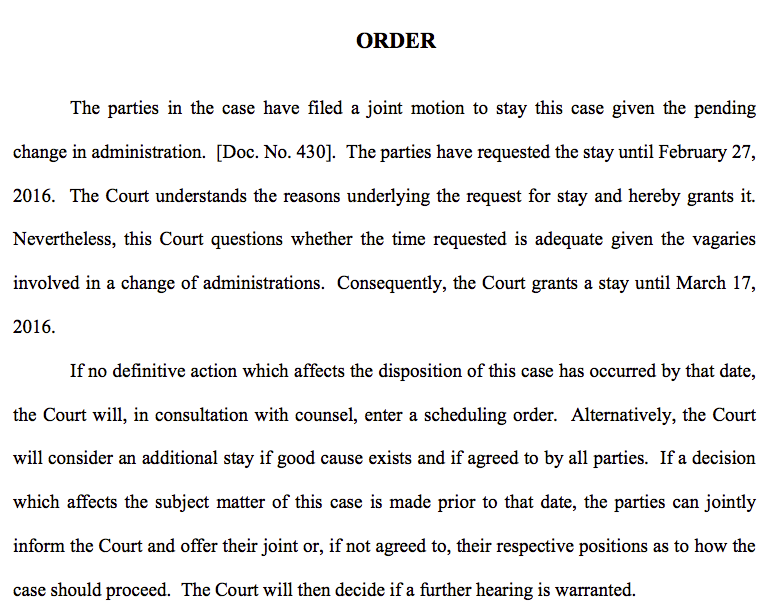The never-ending saga of Ezell v. City of Chicago has yielded another victory for the right to keep and bear arms, from the keyboard of Judge Diane Sykes (I first blogged about this case way back in 2011 when I was still clerking in Pennsylvania!). Eugene Volokh and Dave Kopel summarized the opinions on VC.
In this post, I’ll note that Judge Sykes offers a exemplar of how to perform meaningful constitutional scrutiny–something absolutely devoid in most Second Amendment caselaw. Rather than imposing the burden on the person asserting the right, or even worse, assisting the government by providing arguments that were never advanced in court, Judge Sykes asks the City to provide actual evidence to support its purported interest in public safety.
We explained in Ezell I that the City cannot defend its regulatory scheme “with shoddy data or reasoning. The municipality’s evidence must fairly support the municipality’s rationale for its ordinance.” 651 F.3d at 709 (quoting City of Los Angeles v. Alameda Books, Inc., 535 U.S. 425, 438 (2002)). To borrow from the free-speech context, “there must be evidence” to support the City’s rationale for the challenged regulations; “lawyers’ talk is insufficient.” Annex Books, Inc. v. City of Indianapolis, 581 F.3d 460, 463 (7th Cir. 2009). Here, as in Ezell I, the City’s defense of the challenged zoning rules rests on sheer “speculation about accidents and theft.” 651 F.3d at 709. That’s not nearly enough to satisfy its bur- den. The manufacturing-district and distancing restrictions are unconstitutional.
Observe this standard in practice:
With that point explained, we return to the City’s proffered justification for regulating firing ranges in this way. The City claims that confining firing ranges to manufacturing districts and keeping them away from other ranges, residential districts, schools, places of worship, and myriad other uses serves important public health and safety interests. Specifically, the City cites three concerns: firing ranges attract gun thieves, cause airborne lead contamination, and carry a risk of fire.
The City has provided no evidentiary support for these claims, nor has it established that limiting shooting ranges to manufacturing districts and distancing them from the multiple and various uses listed in the buffer-zone rule has any connection to reducing these risks. We certainly accept the general proposition that preventing crime, protecting the environment, and preventing fire are important public concerns. But the City continues to assume, as it did in Ezell I, that it can invoke these interests as a general matter and call it a day. It simply asserts, without evidence, that shooting ranges generate increased crime, cause airborne lead contamination in the adjacent neighborhood, and carry a greater risk of fire than other uses.
Evidence. To violate constitutional rights you need evidence. Not conjectures. Not post-hoc rationalizations. Actual evidence.
The City’s own expert conceded that there was not even an effort to gather evidence through any research:
The City’s own witnesses testified to the lack of evidentiary support for these assertions. They repeatedly admitted that they knew of no data or empirical evidence to support any of these claims. Indeed, Patricia Scudiero, the City’s zoning administrator, conceded that neither she nor anyone else in her department made any effort to review how other cities zone firing ranges. She conducted no investigation, visited no firing ranges in other jurisdictions, consulted no expert, and essentially did no research at all.
Nor was there any evidence that gun thefts led to an increase in crime:
To shore up its weak defense of the two zoning restrictions, the City submitted a list of 16 thefts from gun stores and shooting ranges around the country since 2010. Only two of these incidents involved thefts from shooting ranges, and no evidence suggests that these thefts caused a spike in crime in the surrounding neighborhood.
What about fire and environmental concerns? Once again, on evidence.
The City’s assertions about environmental and fire risks are likewise unsupported by actual evidence. In its briefs the City relies on a study by the National Institute for Occupational Safety and Health explaining that improperly venti- lated shooting ranges can release lead-contaminated air into the surrounding environment. But the report goes on to describe appropriate filtering techniques that prevent this danger entirely. As for the concern about fire, the City provided no evidence to suggest that a properly constructed and responsibly operated commercial shooting range pre- sents a greater risk of spontaneous combustion than other commercial uses.
Kudos to Judge Sykes for engaging in a meaningful constitutional analysis. Other judges, take notice.
In other areas of law, courts are perfectly capable of striking down laws that are not based on actual evidence. In Whole Women’s Health, for example, the Court even rejected evidence provided by Texas, claiming that it was pretextual, and not really about health and safety concerns. If the courts applied Whole Women’s Health scrutiny to the Second Amendment–which is actually an enumerated right, rather than an emanation from the Due Process Clause–very few gun laws would survive. With the exception of laws barring violent felons from owning arms, or other regulations that consider a person’s propensity to harm others, most gun control measures have only the weakest evidentiary nexus with public safety, and are designed to stigmatize gun owners for exercising their civil rights.
They are also utterly ineffective in actually protecting the public from deranged individuals hell-bent on harming others. As Justice Breyer noted in WWH:
Determined wrongdoers, already ignoring existing statutes and safety measures, are unlikely to be convinced to adopt safe practices by a new overlay of regulations.
The Court needs some constitutional consistency, and to treat the provisions of the Bill of Rights equally.
